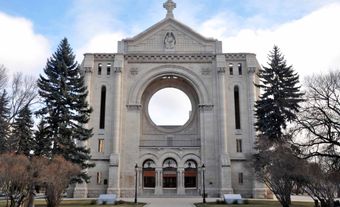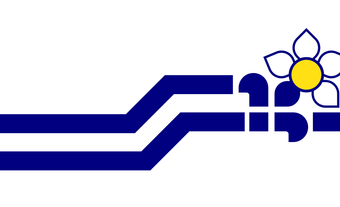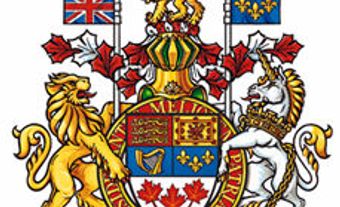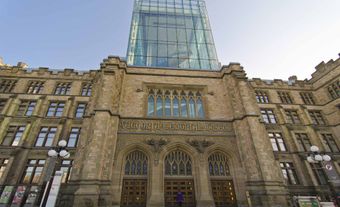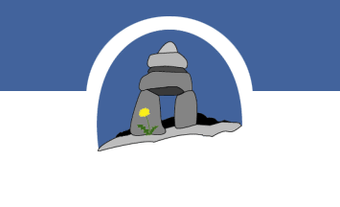Ontario has the largest French-speaking minority community in Canada, and the largest French-speaking community of any province outside of Quebec. Ontario’s French-speaking presence was first established during the French colonial regime in the early 17th century (see New France.) It grew steadily throughout the 19th and 20th centuries, mainly in the eastern and northeastern parts of the province in connection with the forestry, mining and railway industries. French has official language status in Ontario’s Legislative Assembly, in the courts, and in educational institutions (see French Languages Services Act (Ontario)).
Population
The 2016 census counted a population of 622,340 Franco-Ontarians. French is the mother tongue of 4 per cent of the Ontario population (527,690 people), and the first official language of 4.1 per cent of the Ontario population (550,600 people).
Most Franco-Ontarians live in Eastern Ontario, with 42.7 per cent living in and around Ottawa’s economic region. Other economic regions inhabited by Franco-Ontarians are Northeastern Ontario, including Sudbury and North Bay (20.7 per cent); Toronto (19 per cent); Hamilton-Niagara Peninsula (4.7 per cent); Kitchener-Waterloo- Barrie (3.8 per cent); Kingston-Pembroke (2.6 per cent); Windsor- Sarnia (2.9 per cent); London (1.5 per cent); the Northwest region (1.1 per cent); Muskoka-Kawarthas (0.8 per cent) and; the Stratford-Bruce Peninsula (0.4 percent).
History of French-Speakers in Ontario
In 1610, French explorer Étienne Brûlé became the first European to set foot in what is now Ontario. The French presence grew as time went on. French soldiers were garrisoned at Fort Frontenac (Kingston) in 1673, at Fort Conti (Fort Niagara) in 1673, at Fort de Buade (Fort Michilimackinac) in 1683, at Fort Pontchartrain (Detroit-Windsor) in 1701, and at Fort Rouillé (Toronto) in 1750. French-speaking coureurs des bois and voyageurs travelled the province, while Jesuit missionaries evangelized in Huronia.

In the early 18th century, French explorer Antoine Laumet founded Fort Pontchartrain, which would eventually become the city of Detroit, Michigan. In 1749, people arrived to settle and clear land on the south bank of the Detroit River, the future city of Windsor, Ontario. Called Petite Côte, it was the first permanent colony in Ontario and home to the first parish (1767) and one of the first schools (1786), both French. At this time, Ontario was inhabited mostly by Indigenous peoples with French outposts for traders and explorers. Ontario’s French-speaking population did not increase significantly until the second half of the 19th century, when Quebec farmers searching for fertile land settled in Eastern Ontario and along the Canadian Pacific Railway north of Lakes Nipissing and Huron. The French Canadian population in Ontario grew from 14,000 in 1842 to 100,000 in 1881, and reached 249,000 by 1921.
The Impact of Industry
During construction of the Canadian Pacific Railway in the late 19th century, nickel was discovered in Sudbury and gold in Timmins. This drew many French Canadians to Northern Ontario. Between 1861 and 1901, Toronto’s French-speaking population grew from 500 to 3,000. The Alliance française de Toronto was founded in 1902, giving rise to a French press (Toronto-Presse in 1955, Les Nouvelles françaises de Toronto in 1958, Courrier Sud in 1973, Toronto Express in 1976).
In 1920, a pulp and paper mill was established in Kapuskasing and a sawmill in Hearst, attracting many French Canadians. The mid-20th century saw rapid development of the automotive industry in Windsor and Oshawa, bringing an influx of francophones.
Religion
The Roman Catholic Church has had a profound influence on the development of the Franco-Ontarian community. The Church was responsible for the first parishes, schools, colleges and hospitals in many locations across the province.
Between 1848 and 1968, 26 Roman Catholic congregations provided French-language education in Ontario. Between 1845 and 1984, seven provided healthcare services. In addition, Ontario’s caisses populaires were almost all founded in church basements or rectories (see Credit Union). Many schools, hospitals and colleges later became public institutions during the 1960s and 1970s.
Immigration
Franco-Ontarians are a diverse community. At the end of the 20th century, 60 per cent of Franco-Ontarians were born in the province, 25 per cent were born in Quebec and 14 per cent were born outside Canada. Today, Ontario’s French-speaking roots extend to many regions of the world. According to the 2016 census, 58 per cent of Franco-Ontarians were born in Ontario, 25 per cent were born elsewhere in Canada and 17 per cent were born abroad. Of those born outside of Canada, 37 percent of French-speaking immigrants to Ontario were from Africa, 27 per cent from Europe, 20 per cent from Asia and 17 per cent from the Americas (see Immigration in Canada).
Institutions and Organizations
Franco-Ontarians have been strongly committed to maintaining their minority language institutions. Over the years, this has included parishes, elementary and secondary schools, cooperatives such as caisses populaires, and Montfort hospital (see SOS Montfort).
Franco-Ontarians have also established many different organizations for their community. Examples include the Fédération des femmes canadiennes-françaises (1914), the Association of Translators and Interpreters of Ontario (1920), the Union des cultivateurs franco-ontariens (1929), the Association des enseignantes et enseignants franco-ontariens (1939), the Fédération de la jeunesse franco-ontarienne (1975), the Fédération des aînés francophones de l’Ontario (1978), the Association of French-Speaking Jurists of Ontario (1980), the Association des auteures et auteurs de l’Ontario français (1988), the Association française des municipalités de l’Ontario (1989), the Association des professionnels de la chanson et de la musique (1990), the Bureau des regroupements des artistes visuels de l’Ontario (1991), the Union provinciale des minorités raciales et ethnoculturelles francophones de l’Ontario (2005), and FrancoQueer (2005), an organization that represents and defends the rights of French-speaking gay, lesbian, bisexual, transgender and gender-variant (queer) people (seeLesbian, Gay, Bisexual and Transgender Rights in Canada).
Educational Institutions
Educational institutions have been particularly important to the Franco-Ontarian community due to their importance in transmitting French language and culture to younger generations. The Association canadienne-française d’éducation de l’Ontario (the precursor to the Assemblée de la francophonie de l’Ontario) was founded in 1910. Between 1912 and 1927, Franco-Ontarians fought Regulation 17 and the abolition of French-language instruction in schools (see Language Policy; Ontario Schools Question). In 1969, the Ontario government recognized French as an official language in high schools. In 1984, it passed theCourts of Justice Act, which gave French official language status.
Did you know?
On 22 February 2016, Premier Kathleen Wynne issued an official apology, on behalf of the Government of Ontario, to Franco-Ontarians for Regulation 17 and the provincial government’s longstanding policy of assimilating French Canadians.
In 1986, the Legislative Assembly passed the French Language Services Act. Although refusing to recognize French as an official language equal with English, this act gave French legal status in the Legislative Assembly of Ontario and guaranteed the public the right to receive government services in French in 22 regions (see French Language Services Act (Ontario)).
There are today 12 French-language school boards (8 catholic, 4 public) administering over 400 schools, amongst which 104 are French-language secondary schools.
Ontario currently has two French-language colleges (La Cité in Eastern Ontario and Collège Boréal in Northern and Southern Ontario). The Université de l'Ontario français (Toronto) is scheduled to open to students in September 2021. It will be the first independent French-language university in the province. Laurentian University, Glendon Campus at York University, the University of Ottawa, the University of Sudbury, University of Hearst (affiliated with Laurentian University), St. Paul University (affiliated with University of Ottawa), Dominican University College, the Ontario Institute for Studies in Education at the University of Toronto and the Royal Military College all offer some programs in French.
Media
Between 1950 and 1980, 26 French-language newspapers were created in Ontario, but most had short lives. Today, Ottawa has the only daily French-language newspaper in Ontario (Le Droit), which is also published online. Several French-language newspapers have been published weekly since the 1960s or 1970s, notably in Cornwall, Hearst, Penetanguishene, Toronto, Sudbury and Windsor.
Three television stations — Télévision française de l’Ontario (TFO), ICI Radio-Canada Télé and Unis TV — broadcast French-language content in Ontario (see also French-Canadian TV Makes Hit Shows). All three have corresponding websites online.
Ontario has six French-language community radio stations (in Cornwall-Alexandria, Hearst, Kapuskasing, Ottawa, Penetanguishene and Toronto), and two public radio stations (Radio-Canada’s ICI Première and ICI Musique).
Arts and Culture
Ontario has seven professional French-language theatre companies: one in Sudbury, two in Toronto and four in Ottawa. Six French-language publishing houses operate in Ontario, and many Franco-Ontarian writers have won the Trillium Book Award (Ontario) or Governor General's Literary Awards.
Each year, the Festival franco-ontarien in Ottawa, the Franco-Fête in Toronto and La Nuit sur l’étang in Sudbury welcome musicians from near and far. In the mid 1970s to 1980s, the Coopérative des artistes du Nouvel Ontario (CANO)and musicians Robert Paquette, Donald Poliquin and Paul Demers were among the first to showcase Franco-Ontarian musical talent. Notable Franco-Ontarian musicians include Damien Robitaille, and comedians include Véronic DiCaire, Katherine Levac, Patrick Groulx and Julien Tremblay (see Francophone comedians).
The Bureau des regroupements des artistes visuels de l’Ontario (BRAVO) was established in November of 1991. The non-profit organization brings together Franco-Ontarian artists in support of their professional development and to defend their collective interests. Notable Franco-Ontarian visual artists include Clermont Duval, Shahla Bahrami, Marc Charbonneau, Sylvie Bélanger, Yvan Dutrisac, Joseph Muscat and Ginette Legaré.
Few French language films, particularly featuring Franco-Ontarian characters, have been produced in Ontario, although this is slowly changing. La Sacrée (2011) was the first feature comedy to be made in Ontario entirely in French. Eaux Troubles/Broken Waters (scheduled for release in 2019) produced by Guelph filmmaker Karolyne Pickett is a bilingual film set in the 1980s and centred around two Franco-Ontarian women.

Community Vitality and Symbols of Franco-Ontarian Identity
A number of francophone communities in Ontario celebrate Saint-Jean-Baptiste Day. It plays a large part in the annual Festival franco-ontarien in Ottawa and is also celebrated in Eastern Ontario, and in many towns in Northern Ontario such as Hearst and Kapuskasing.
At the start of the 21st century, a few events would serve to reinforce the recognition of Franco-Ontarians. In 2001, the Franco-Ontarian flag was recognized as the official emblem of francophones in Ontario. In 2009, the province adopted a new definition of “francophone” to account for immigrant communities that might be able to benefit from French-language government services. In 2010, September 25 was officially recognized as Franco-Ontarian day. In September 2020, the Ontario legislature voted unanimously to recognize the Franco-Ontarian flag as an official emblem of the province.

 Share on Facebook
Share on Facebook Share on X
Share on X Share by Email
Share by Email Share on Google Classroom
Share on Google Classroom



